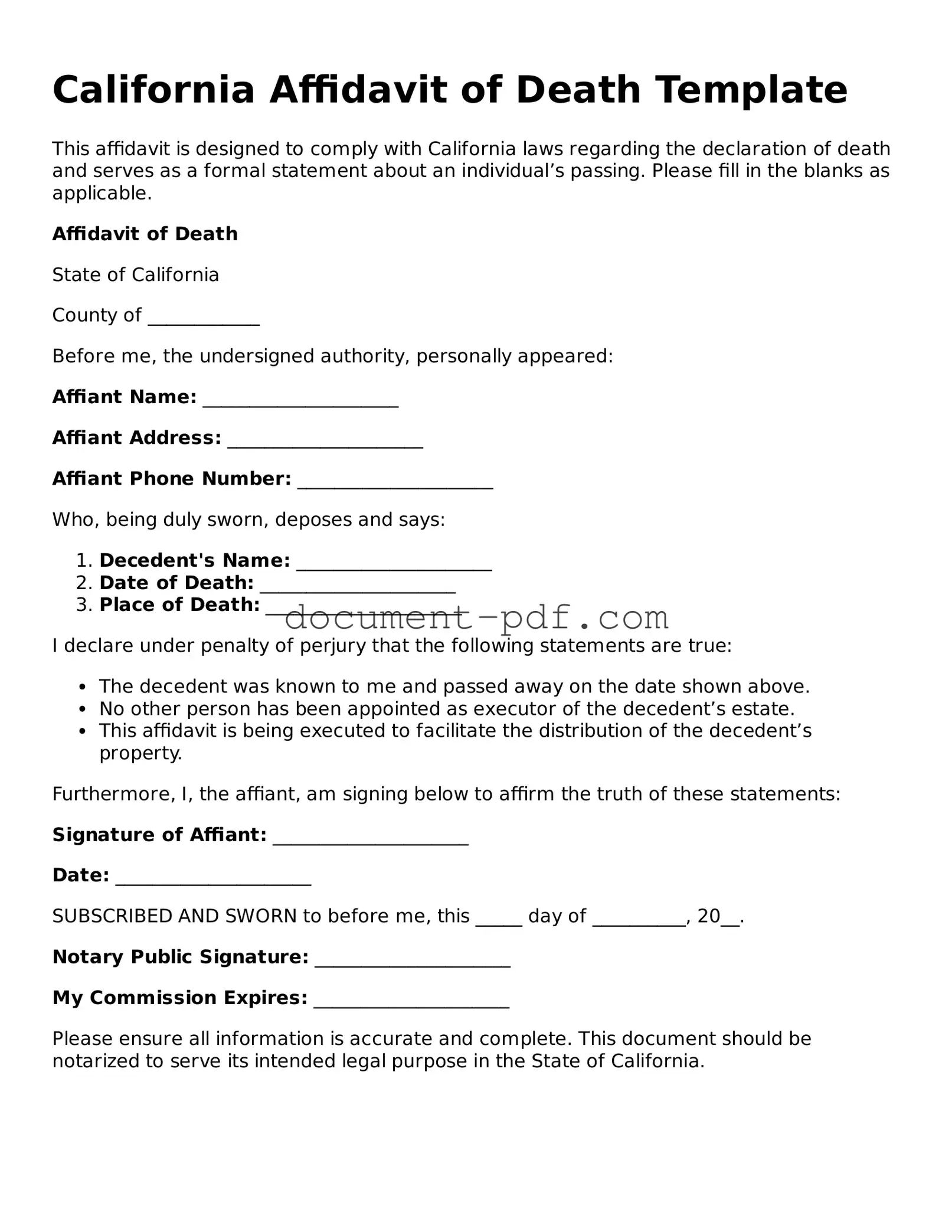California Affidavit of Death Template
This affidavit is designed to comply with California laws regarding the declaration of death and serves as a formal statement about an individual’s passing. Please fill in the blanks as applicable.
Affidavit of Death
State of California
County of ____________
Before me, the undersigned authority, personally appeared:
Affiant Name: _____________________
Affiant Address: _____________________
Affiant Phone Number: _____________________
Who, being duly sworn, deposes and says:
- Decedent's Name: _____________________
- Date of Death: _____________________
- Place of Death: _____________________
I declare under penalty of perjury that the following statements are true:
- The decedent was known to me and passed away on the date shown above.
- No other person has been appointed as executor of the decedent’s estate.
- This affidavit is being executed to facilitate the distribution of the decedent’s property.
Furthermore, I, the affiant, am signing below to affirm the truth of these statements:
Signature of Affiant: _____________________
Date: _____________________
SUBSCRIBED AND SWORN to before me, this _____ day of __________, 20__.
Notary Public Signature: _____________________
My Commission Expires: _____________________
Please ensure all information is accurate and complete. This document should be notarized to serve its intended legal purpose in the State of California.
